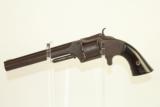 |
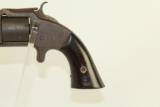 |
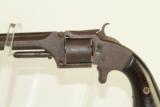 |
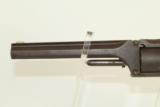 |
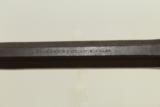 |
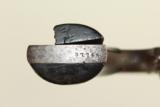 |
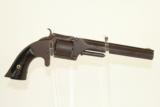 |
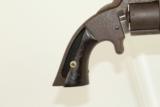 |
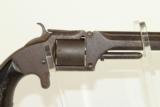 |
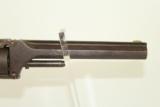 |
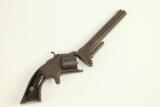 |

HICKOK, CUSTER, HAYES S&W Number 2 Army Revolver
Guns International #: 100833907 Seller's Inventory #: 21742
Category: Smith & Wesson Revolvers - Antique - Civil War Revolvers
Seller's Information
When emailing or calling sellers direct, please mention that you saw their listing on GunsInternational.com
Seller: AncestryGunsLLC
Company: Ancestry Guns LLC
Member Since: 11/3/16
State: Missouri
Zip: 65203
Country: United States
Phone: (314) 707-7373
International Phone: 314-707-7373
Platinum Seller
Number of Active Listings: 1467
Total Number of Listings: 29942
Seller: FFL Dealer
Return Policy: 3 day inspection and return policy on used guns.
Payment Types Accepted: Credit Card, Certified Check, Money Order
Description:
HICKOK, CUSTER, HAYES S&W Number 2 Army Revolver
INFAMOUS Smith & Wesson CIVIL WAR Belt Pistol
Here we present an antique Smith & Wesson Model No. 2 Old Army Revolver, made circa 1865 in Springfield, Massachusetts. Smith & Wesson purchased the rights to the Rollin White patent for the bored through cylinder, which would forever change the development of revolving firearms. Beginning in 1857 they produced the Number 1, a 7-shot .22 rimfire pocket pistol, which was quite successful. This was fine for the commercial market, but S&W knew they could scale up their design for a pistol that could be worn on the belt in a holster. They began shipping their Number 2 “Army” Revolver, a 6-shot .32 caliber, just 2 months after the beginning of the American Civil War.
The S&W Number 2 Army Revolver held distinct advantages over the percussion revolvers of the day in that its metallic cartridge ammunition was both waterproof and quick and easy to load into the gun, due to the bored through cylinders like we still use today. However, several disadvantages kept this particular revolver from overtaking percussion revolvers, namely Colt’s, in large scale military usage. Those were bullet size and the logistics of providing the specific ammunition during the war. The Army preferred a .44 caliber projectile and the Navy the .31. Logistically, sending loose powder and ball to fit a variety of different percussion guns was much simpler than sending specific ammunition to a particular group in the field.
Despite Colt’s enormous advantage of military contracts as well as commercial sales, Smith & Wesson was able to keep their market advantage via the Rollin White patent until about 1870. This caused no shortage of ruffled feathers, both at the time, in patent lawsuits, and later. By 1870, Smith & Wesson were the big winners, having made over $1,000,000, while Rollin White was the loser, having only made $71,000 and spending years and all his money in defense of the patent. He went to Congress for the Rollin White Relief Act, but the act was vetoed by President Ulysses S. Grant. His Chief of Ordnance Alexander Dyer called White’s patent and his defense of it an “inconvenience and embarrassment”. Basically, he was still miffed 5 years after the war ended that White had not allowed others to infringe on his patent to the advantage of the United States being better armed during the war.
Though it never received any large federal contracts, it was adopted at the state, unit and individual levels. Per Charles Pate, Kentucky ordered 731 Number 2 “Armies” late in 1862, and even more in 1863. He says that “Most, if not all, of the revolvers used to fill the Kentucky order were almost certainly under 10,000 in serial number.” He also lists individuals and units that used these revolvers, per records and personal correspondence. The 7th Kentucky Cavalry appears to be the only unit officially issued this handgun during the war. Among the most famous of users was future U.S. President Rutherford B. Hayes, who began his part in the war as Lieutenant Colonel and ended it with Brevet Brigadier General. Ulysses S. Grant wrote about him “his conduct on the field was marked by conspicuous gallantry as well as the display of qualities of a higher order than that of mere personal daring." Another name and legend from the Civil War who used the Number 2 was General George Armstrong Custer, who owned a pair of them. “Wild Bill” Hickok wore this gun the night he was assassinated while playing cards, his last hand now called the “Dead Man’s Hand” of Black Aces and 8s.
This specimen is in good condition. There is a little original blue on the gun but the vast majority has an even brown patina. All markings are clear and legible. The grips are rosewood and numbered to the gun. The right grip panel is of course broken. The bore is good and the action is smooth and fine.
Own the original! This is a legitimate antique and not a reproduction.
Barrel is octagonal and 6 inches in length.
Caliber: .32 rimfire long
The bore is in good condition and the firing mechanism is fine.
Overall condition as seen in photos.
Here is a revolver that had saw significant use during the American Civil War and forever impacted the history of firearms development!
Very Fast. Very Safe. FREE SHIPPING WORLDWIDE. Delivered directly to your door by express mail!
Guaranteed AUTHENTIC & Includes CERTIFICATE OF AUTHENTICITY.
ancestryguns
$1200
#21742
SOLD
Antique: Yes